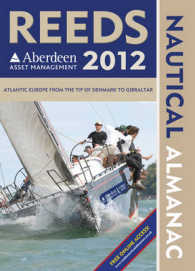Full Description
Dialects are constantly changing, and due to increased mobility in more recent years, European dialects have 'levelled', making it difficult to distinguish a native of Reading from a native of London, or a native of Bonn from a native of Cologne. This comprehensive study brings together a team of leading scholars to explore all aspects of recent dialect change, in particular dialect convergence and divergence. Drawing on examples from a wide range of European countries - as well as areas where European languages have been transplanted - they examine a range of issues relating to dialect contact and isolation, and show how sociolinguistic conditions differ hugely between and within European countries. Each specially commissioned chapter is based on original research, giving an overview of work on that particular area and presenting case studies to illustrate the issues discussed. Dialect Change will be welcomed by all those interested in sociolinguistics, dialectology, the relevance of language variation to formal linguistic theories, and European languages.
Contents
List of maps; List of figures; List of contributors; Preface; Map; 1. The study of dialect convergence and divergence: conceptual and methodological considerations F. Hinskens, P. Auer and P. Kerswill; Part I. Convergence, Divergence and Linguistic Structure: 2. Internal and external factors in phonological convergence: the case of English /t/ lenition J. Kallen; 3. Dialect/standard convergence, mixing and models of language contact: the case of Italy G. Berruto; 4. Convergence and divergence in grammar L. Cornips and K. Corrigan; 5. Phonology, grammar and discourse in dialect convergence J. Cheshire, P. Kerswill and A. Williams; Part II. Macrosociolinguistic Motivations of Convergence and Divergence: 6. Processes of standardisation in Scandinavia I. L. Pedersen; 7. The birth of new dialects P. Kerswill and P. Trudgill; 8. Dialect convergence in the German language islands P. Rosenberg; 9. Political borders and dialect divergence/convergence in Europe C. Woolhiser; 10. The influence of urban centres on the spatial diffusion of dialect phenomena J. Taeldeman; Part III. Microsociolinguistic Motivations: 11. Subjective factors in dialect convergence and divergence T. Kristiansen and J. Jørgensen; 12. How similar are people who speak alike? An interpretive way of using social networks in social dialectology research J. A. Villena-Ponsoda; 13. The role of interpersonal accommodation in a theory of language change P. Auer and F. Hinskens; References; Index.








